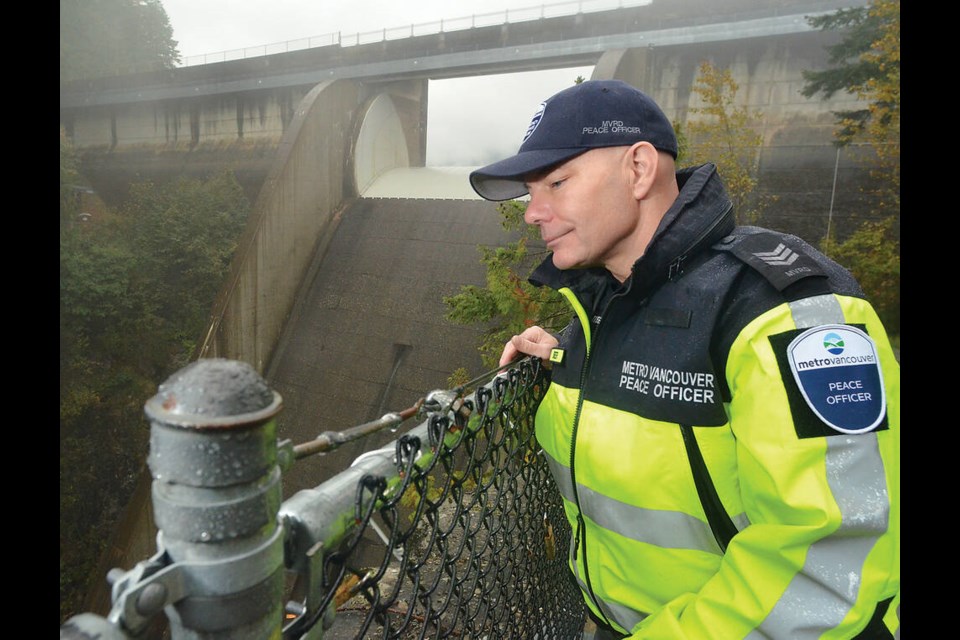Metro Vancouver staff are keeping a close eye on the Capilano Canyon after a rock slide sent debris into the river below the Cleveland Dam.
The regional authority began receiving reports about the slide on Thursday afternoon, said Brant Arnold-Smith, division manager of protective services and emergency management.
“It’s an area that is well known to Metro Vancouver teams. We actively monitor it on an ongoing basis, because it historically has been an area where the canyon walls do shed rock from time to time,” he said. “Yesterday’s rockfall, although small, was larger in nature [than slides typically seen in the area].”
There are a number of natural factors that cause rock slides of that type to happen, Arnold-Smith said, including rain, freezing and thawing, erosion and root growth within the rock.
Arnold-Smith said the slide presented no danger to the dam itself and there is likely little risk to the public walking on any of Capilano River Regional Park’s trails.
“It’s an area that is very hard to get to and very dangerous because of the steep canyon walls,” he said.
The biggest threat the slide poses is environmental. There was a much larger slide at the same site decades ago. As more debris comes down on top of it, there is a risk that it could choke the Capilano off, which would devastate the fish habitat below.
Metro alerted the Capilano River Hatchery staff, Fisheries and Oceans Canada, the provincial Ministry of Water, Land and Resource Stewardship as well as the Sḵwx̱wú7mesh Úxwumixw (Squamish Nation) and səlilwətaɬ (Tsleil-Waututh Nation).
“We confirmed that water was flowing, which was the great news,” he said.
In the event of a full blockage, Metro could release more water from Cleveland Dam. That could have consequences for the Capilano Reservoir, which is just now beginning to refill after the summer’s drought, but Arnold-Smith said it’s something they were prepared to do.
“It wasn’t fully blocked, but we were very keen to take swift action to ensure that water would continue to flow downstream, so that the salmon habitat would be protected,” he said.
Metro Vancouver has brought in geotechnical engineers to assess the stability of the cliff face where the rocks fell, as well as the growing pile of debris at the bottom.
“Even though it’s not affecting river flow, presently, our concern is there could be another rockfall that could fall in and totally block the river, so we want to be proactive and mitigate that from happening,” he said.
While there likely isn’t much they can do to prevent more naturally occurring rock slides from happening, they will be looking at ways of removing some of the existing rock debris from the canyon.
“That is the challenge. And our teams are currently doing assessments and working with our environmental experts as well as geotechnical engineers to figure that out,” he said. “A big part of emergency management is mitigation and identifying hazard risks and vulnerabilities before the emergency happens.”
The event has been a reminder that the Capilano River can be an inherently dangerous place, Arnold-Smith added.
“It’s one of our most beautiful parks in the Lower Mainland and it’s visited by hundreds of thousands of people every year, and we really want to make sure that visitors and tourists who are visiting the park understand,” he said. “It’s ever changing and sometimes an unpredictable force of nature, and you need to respect that river and tall canyon walls and be very aware of the risks.”



